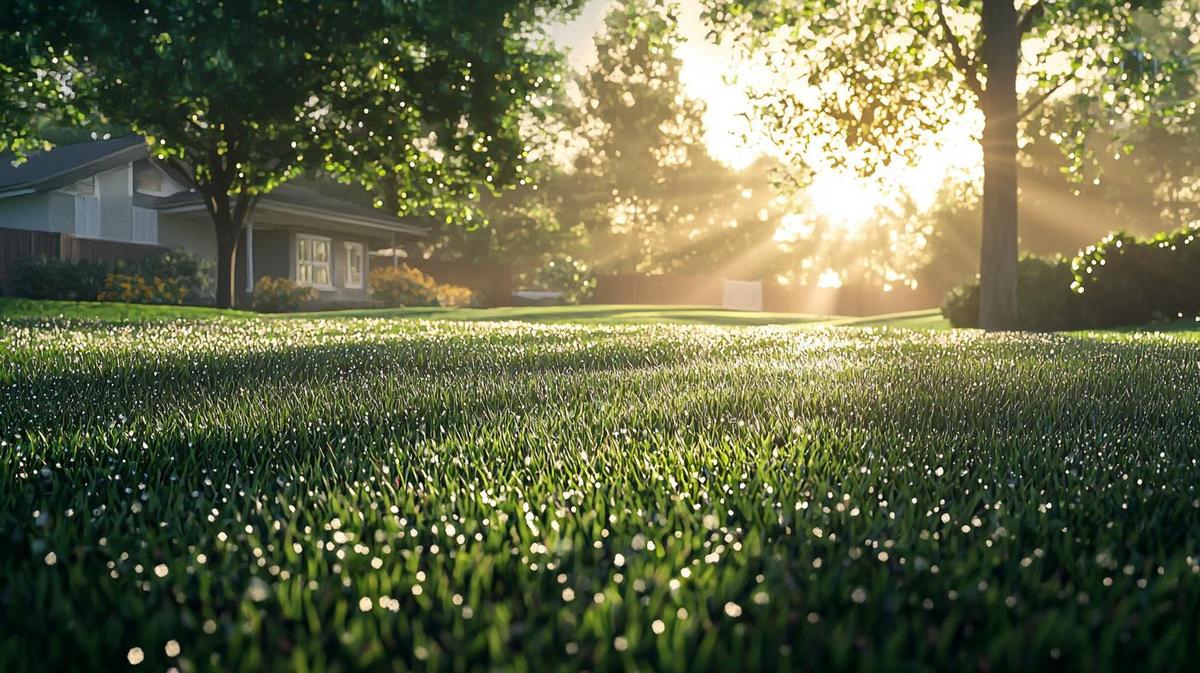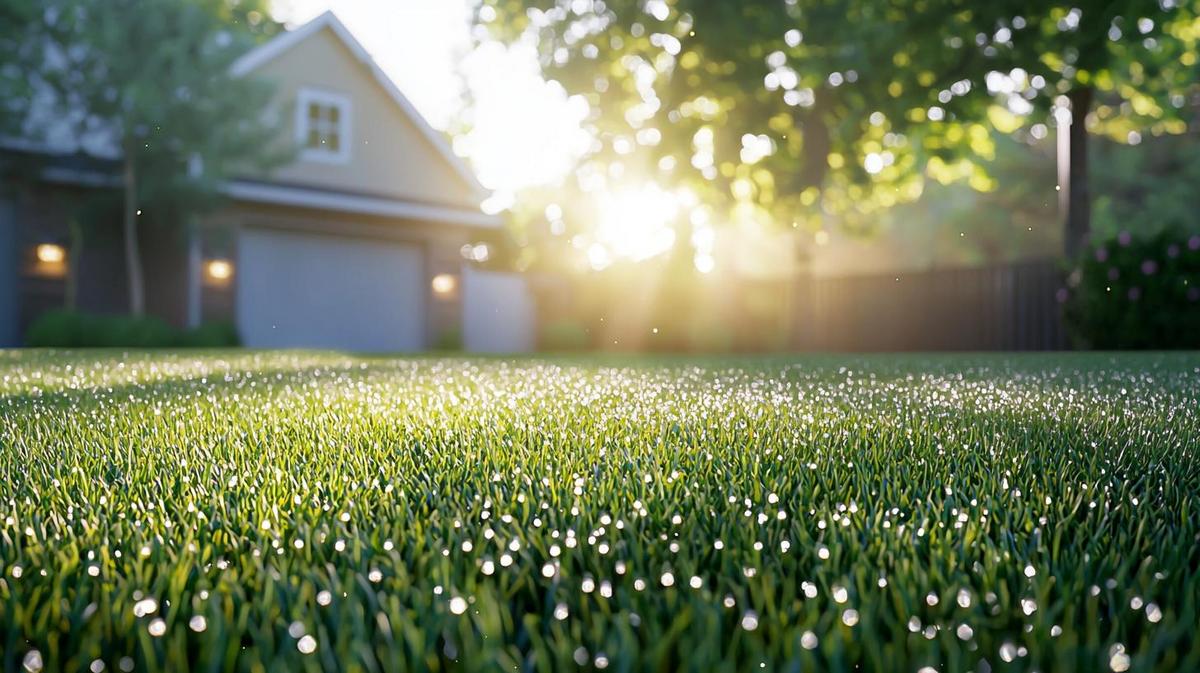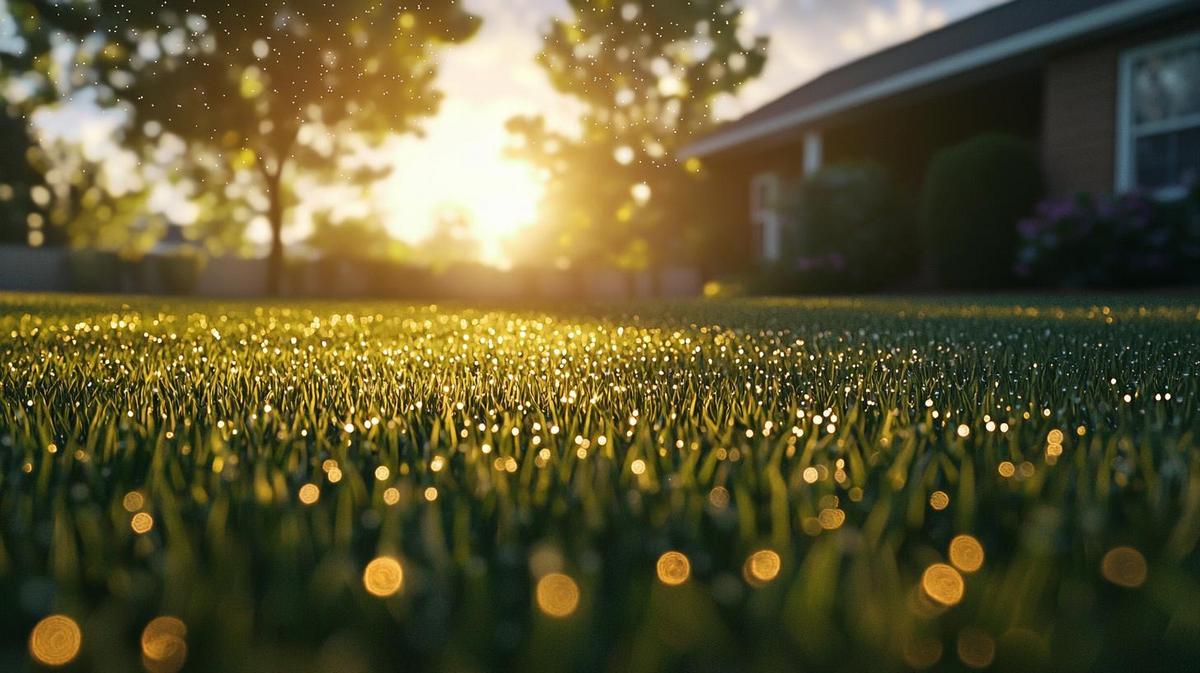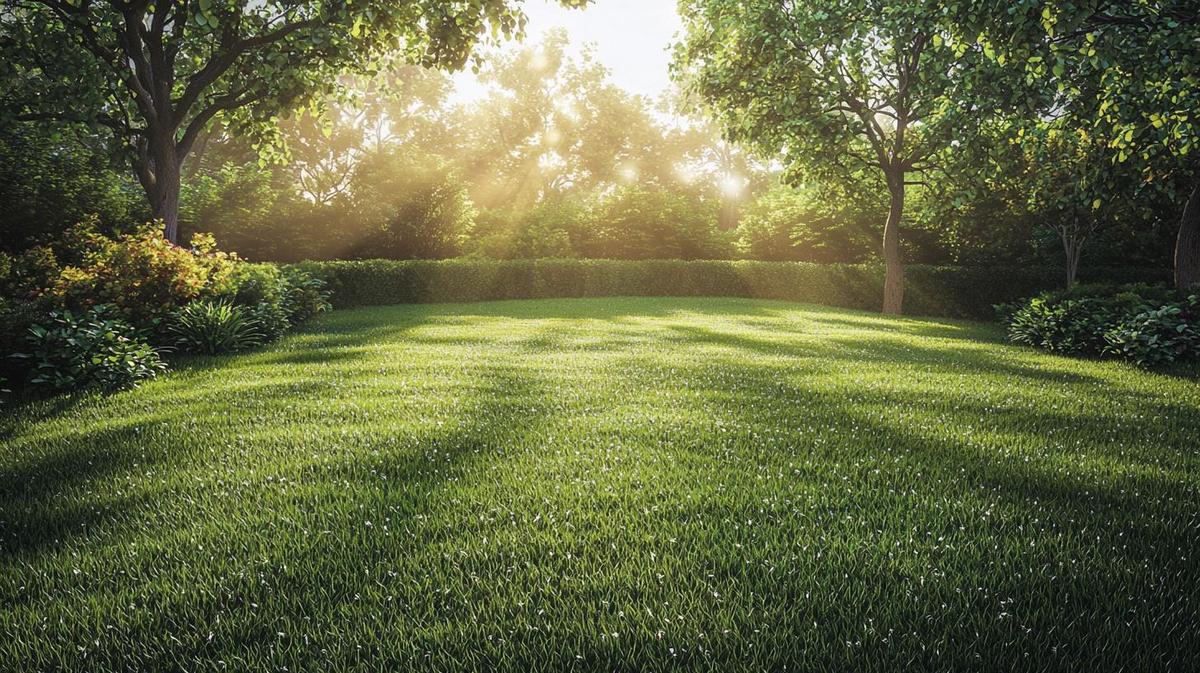Best Time Mow Lawn:
- Ideal time is mid-morning (8-10 AM) for dry grass and a cleaner cut.
- Late afternoon is second best due to cooler temperatures; finish before 6 PM.
- Avoid early mornings (wet grass) and late evenings (fungal infection risk).
Seasonal Mowing Guidelines:
- Spring: Mow weekly; height 2.5-4 cm.
- Summer: Mow twice weekly; leave the grass longer for drought resistance.
- Autumn: Mow weekly; gradually raise mower height for winter prep.
- Winter: Rarely mow; only if unseasonably warm and the grass is dry.
Impact of Weather:
- Avoid mowing wet, frosty, or during extreme heat as it can damage the lawn.
- Wait for dryness post-frost or dew.
Strategies for Lawn Health:
- Use sharp blades for clean cuts.
- Adjust mower settings per season and grass type.
- Tailor mowing practices to lawn conditions: height, type, and growth patterns.
Are you dreaming of a lush, green lawn that’s the envy of your neighborhood? Knowing when to mow makes a huge difference for a healthy, vibrant yard. Mowing in the right season and at the best time of day promotes robust grass growth and keeps your lawn pristine. Join me as I break down the best times to mow and essential strategies for seasonal and weather conditions. Let’s dive in and transform your lawn care routine!
What is the Best Time of Day to Mow Your Lawn?
The best time to mow lawn can depend on your local climate and grass type, but some times are generally better than others. Early morning might seem peaceful, but it’s not ideal for mowing. Why? Because the grass is often wet from dew, and wet grass can clump, which makes mowing uneven. Also, wet conditions can damage your lawnmower and leave tracks on your lawn.
Mid-morning, between 8 AM and 10 AM, is the ideal time. At this time, the grass has had enough time to dry from the morning dew, leading to a cleaner cut. Mowing your lawn at this time allows it to heal during the day. This helps prevent stress on the grass and keeps it healthy, which in turn keeps it looking great.
If you can’t mow in the morning, late afternoon is the next best thing. This time of day is good because the temperature is cooler, yet there’s enough light. This timing also helps your grass withstand the evening and night. It’s important to finish before 6 PM, as mowing much later increases the risk of fungal infection.
Midday mowing is generally okay but be mindful not to cut too much grass. The sun can scorch the freshly cut tips, which isn’t ideal for your lawn’s health. Understanding these timing nuances helps you maintain a thriving and attractive lawn environment.

When Should You Mow Your Lawn in Different Seasons?
Mowing the lawn is key for keeping it healthy and looking good. Each season calls for a change in approach to achieve a lush yard that suits the weather and growth patterns of grass.
Spring is when the grass starts to grow again. Mow about once a week using a mower set between 2.5 to 4 cm. This height helps the grass thrive as temperatures and light increase.
Summer brings heat, and extra care is needed. Mow twice a week, but remember to leave the grass a bit longer. This allows the grass to withstand sun exposure and reduces wear. Adjusting the mower to higher settings can help preserve a green lawn, even through periods of little rainfall.
Autumn signals a gradual slowdown in growth. Reduce mowing to weekly, raising the mower blades as winter nears. This prepares the lawn for months ahead and can often coincide with the last cut of the year. Keep an eye out for days when the lawn might grow unexpectedly due to milder weather.
As for winter, mowing usually isn’t needed unless conditions are unseasonably warm. If new growth appears, a light mow may be necessary, but only when the grass is dry and the soil stable. Mowing wet or frosty grass can cause harm, as moist soil compacts and mowers can tear wet blades.
Keeping these seasonal tips in mind ensures your lawn stays in top shape all year, with thriving, robust growth in every season.

How Does Weather Impact Your Mowing Schedule?
What are the risks of mowing wet grass?
Wet grass can clog the mower and tear the grass. It leaves your lawn looking uneven and damaged. Worse yet, heavy mowing on wet soil compacts it, smothering roots.
How does extreme heat affect mowing frequency?
During extreme heat, grass grows slower. Mow less often to keep stress low on your lawn. Cutting too much in one go can scorch it since the grass gets fragile. You also need to check for heat-affected grass damage, which often appears in dry patches (source).
Why is frost a concern for lawn mowing?
Frost makes grass stiff and brittle. If you mow when it’s frosty, you break the grass blades. Micro-tears and splitting could lead to infection in the lawn. It’s crucial to wait for the frost to melt before mowing.
Consider moisture conditions wisely. Always check the dew on your grass in the morning. Avoid cutting when moisture is high, aiming for a drier time mid-morning. Always adapt your mowing habits to match the weather. Protect your grass, and it will thrive through all seasons.

What are the Best Mowing Practices for Healthy Lawns?
Understanding how to mow your lawn for health and beauty is crucial. You must adjust your mower settings for each season. During spring, a grass height of 2.5-4 cm suits most lawns. In summer, raise the blades; taller grass copes better with drought. Autumn brings the last cut, so gradually raise the mower blades.
Take care of your mower blades to ensure clean cuts, which minimizes damage to the grass. Dull blades will tear the grass and make it weak. Check and sharpen your mower blades regularly to keep your lawn healthy.
Mowing affects grass health by promoting strong root systems. Regular mowing helps the grass grow thick and vibrant. Cutting too much at once or mowing when wet can damage the grass and soil. Avoid these mistakes to maintain a lush and healthy lawn. It’s important to find a balance; and follow the right practices for each season to keep your lawn thriving.

Are There Specific Mowing Strategies for Different Lawn Types?
What techniques should you use for tall or dense grass?
Precision is key: set your mower to a higher setting. Tall grass needs a gentle trim to avoid shock. Gradually lower the height over several weeks. This method helps the grass grow thicker and better resist weeds.
How should you approach mowing for newly established lawns?
With newly planted lawns, patience is essential. Let the grass reach at least 3 inches before its first cut. Use a sharp blade set to a high position. This protects the tender roots and encourages strong growth.
Are there different schedules for various grass types?
Absolutely. Grass types have unique needs. Cool-season grasses like fescue or bluegrass thrive with spring and autumn mowing. Warm-season grasses, such as Bermuda, peak in summer. Adjust your schedule based on seasonal growth patterns.
Each grass type benefits from the right schedule and technique. A proper approach ensures your lawn stays lush and green all year long. For a deeper dive or specific research, explore this study.
Pay attention to your grass type and mowing needs. Tailoring your approach helps maintain a healthy and beautiful lawn. Mowing techniques matter in keeping your yard vibrant and resilient. Each strategy can improve different grass conditions, achieving a yard that stands out.
Conclusion
In this post, we explored the best times and techniques for mowing your lawn. Mid-morning is ideal, offering benefits without the drawbacks of early morning or late afternoon. Timing changes with seasons; spring and summer need specific care, while winter is less demanding. Wet grass and frost require caution. Maintain your mower for healthier grass, and use tailored strategies based on lawn type. Proper timing and technique keep your lawn lush and improve your property’s look. Invest in the right practices for a beautiful, healthy landscape year-round.
